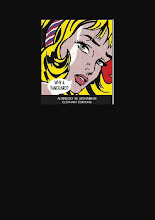Present-day capitalism has changed the whole of economic reality. The old world regulated by laws and rigid rules where individual firms were able to make long-term programmes, has changed into one that is quite devoid of rules or laws, where in order to survive companies must develop their flexibility and adaptability to a maximum degree. Revolutionary structures, including anarchist ones, were also once modelled along the idea of a rigid economic reality. Now, at a time when profound technological changes have put production in a state approaching ‘chaos’, we are asking ourselves if these old revolutionary theories are still valid. I do not think we can say they are.
A glance at some of the old certainties
One thing that can be understood from the few not very elaborate analyses in circulation, is the different role that is being ascribed to the concept of ‘economic crisis’ in the widest sense of the term.
Even in recent years there was a lot still being said in Marxist circles about an ‘objective development of the crisis’, and various strategies and organisations based themselves on this conviction. Not only did they foresee a revolutionary moment of truth with the class enemy, but they even went into the details, linking the strategic function of the revolutionary party and the ‘winning’ choice of generalised armed struggle to the course of the ‘crisis’ that was claimed to be objective.
We know that things do not work like that. But the events leading up to the aforementioned’s current faltering do not seriously merit discussion. They could be summed up as an about-turn in perspective following a few banal problems of accountancy. Things didn’t work out (but starting off on such a premise, how could they have?) so they reached the conclusion that the objective mechanism had not ‘functioned’ as it should have done. Others ended up denying the mechanism altogether in a conversion to collaborationism, revealing that the mental limitations of today are identical to those of the past, it is just that the latter were hidden by a mantle of slogans and prefabricated ideas.
The complexity of the problem of “crisis”
It is a known fact that Marxists also made use of this concept as a form of consolation. At times, when conflict was at a low ebb and hearts were tepid, the determinist train kept chugging along. The crisis worked in place of revolutionaries, eroding away the heart of the economic and social structure, preparing the field for the contradictions of the future. In this way the militant who has sacrificed everything to revolutionary hope does not see the ground move under his feet and continues in his struggle, believing himself to have an ally concealed in the very nature of things.
In more contradictory times, when the level of the class struggle heightens, determinism halts, or rather, being of little use it is hidden behind the scenes. It is replaced by an opportunistic voluntarism that is capable (or hopeful) of bestriding the initiatives of the movement, the sudden outbreaks of destruction and the creative, spontaneous organisations.
But apart from the business of shopkeeping with which the supporters of revisioned power are still occupying themselves, the problem continues to exist in all its consistency.
In actual fact the course of the economic and social process is not homogenous either in the minutiae of specific situations or in the whole of the great international polarities. Periods of economic shakedown, constant levels of production, greater international equilibrium (both political and economic) alternate with periods wrought with contradictions where the whole system seems to be reaching a critical point.
Economists have often spoken of ‘cycles’, although they never agree as to how these should be identified or specified. It could be said that the discussion of cycles is one of the most astonishing aspects of this ridiculous science.
Will it ever be possible for capitalists to put order either in the economic setup as a whole, or in the individual structures that comprise it? The answer is a definite ‘no’...
A double mistake
All this does not mean that crises necessarily exist, so we can simply wait for events to take us to the revolutionary moment of their own accord.
On the contrary. Such ‘revolutionary’ theory goes hand in hand with the capitalist theory of ‘planning’ (Long Range Planning).
The mistake was the same in both cases. It was thought that the economic (and social) formation was a composite whole held together by intrinsic, well-ordered laws which a precise science (economics) and its chambermaid (sociology) studied and brought to light, allowing revolutionaries on the one hand and the capitalists on the other to draw certain conclusions in order for each to set out their long term strategies.
It is now understood that crises do not exist, not because the world is in perfect order but because, on the contrary, it is in complete disorder. It is continually at the mercy of turbulence that can either increase or decrease, but cannot be considered a ‘crisis’ in that it in no way corresponds to ‘anomalous’ situations but simply to the reality of the economic and social setup. For the capitalists Long Range Planning became obsolete at the beginning of the Seventies. One could say that the parallel concept of “crisis” still exists for some revolutionaries. The time-lapse, as we can see, is considerable.
It seems to me that it would be useful to look at the changed conditions of the economy—at least at the macroeconomic level—so as to try to understand the profound changes that are taking place in revolutionary analyses which once saw ‘crises’ as a borderline concept that made possible a better use of the instruments of rupture.
It is also beyond doubt that much anarchist analysis is also based on slow understanding, undeserved transferals and involuntary acceptance. For a long time it was thought that the economic analyses supplied by the Marxist church could be used by simply eliminating a few of the premises, and the conclusion. This has already caused enough problems. It would be well to look for a solution.
I do not believe that it is possible to use Marxist ideas in any way at all—except to purge them of the dialectically determinist premises which systematically end up transforming them into indigestible banalities.
Towards a cohabitation with disorder
The need to conform to productivity forecasts based on a presumed economic order or economic laws made the situation of the capitalist firms (which constitute the main element of what we call “capital”) very risky. In this way, any variation from forecasts was considered spurious and caused by unexpected situations, and as a result the durable, constant nature of occurrences that were claimed to be exceptional escaped them. Changes in levels of demand, oligopolist competition, corporate defence of markets, price levels, changes, costs, occupational norms, environmental conditioning: all these could no longer be considered ‘elements of disturbance’ that contradicted the ‘certainties’ of the only theory authorised to interpret reality.
So capital found itself faced with surprises at a strategic level. It faced continual changes in its forecasts, making it increasingly difficult to adjust to economic reality.
A suspicion that there might be a possibility of economic behaviour as a whole being ‘irrational’ began to spread.
State intervention, especially at the end of the Seventies, was undoubtedly one aspect that might contribute to a possible equilibrium, but that alone was not enough. State intervention, aimed at reducing the negative aspects of ‘capitalist competition’, turned out to concentrate too much on the institutional need for social control. Basically the State is an economic enterprise that tends to reduce the whole economic (and social) reality to the production of one single product: social peace.
Capital, seeing itself reflected in the deforming mirror of the Eastern European countries, is well aware that the State capitalist road to regeneration is an even worse evil. That road guarantees the persistence of power, but distorts the classical aspects of capitalism too much, domesticating it within the restricted confines of the institutional need for control.
Basically then, thinking about it, the whole phase of setting up the ‘State’ as a corrective variable, which in strictly economic terms came to an end in the early Eighties, has also aimed to have itself supported (at least as far as the advanced capitalist countries are concerned) by the greatest technological innovation in history: the electronic one. This in fact was the indispensable element for living with the monster. The solution lay in reaching the maximum flexibility in the shortest possible time.
The theoretical effort
Economists have been working hard. Faced with the dangers of remaining closed within the schema of ‘crisis’, they pulled up their sleeves. First they criticised the neoclassical theory of business enterprise, then the managerial one. They tried to push this theory towards further research into ‘uniformity’, so as to put an end to uncertainties caused by the great multiplicity of phenomena.
Then a critique of ‘crisis’, seen as the passive acceptance of an anomalous situation which could be overcome, was put forward. The whole of the Seventies was characterised by economic research aimed at criticising, in the ‘negative’ sense, the unreliability of forecasts based on the economic theories of the past (both neoclassical and managerial, it makes no difference).
Finally, at the beginning of the Eighties, ‘instability’ and the relative complexity of phenomena came to be recognised as intrinsic to the economic setup, and the idea of the presence of contrasting forces which could be put in order was discarded for good.
Economists now talk of ‘non-adjustability’. A particular situation—in the short or very short term—only becomes comprehensible to the company if economic reality is seen as a whole, without any centre or inborn capacity to instill order, but as a number of forces acting on the basis of decisions that cannot always be referred to as ‘rational’.
The answer that economic theory came up with to solve this problem was clear. Capitalist enterprise can only face such a situation if it develops flexibility to a maximum degree. It is not a question of a ‘new’ situation, but of a ‘new’ way of seeing things. The firm must be flexible in decision-making, in the organisation of production, and in its capacity to adapt to the current changes as a whole.
So firms are decentralising, productive processes are no longer fixed, anomaly becomes the rule. Chaos is led into the reassuring canon of ‘economic law’.
In reality, chaos has remained just that. What has been changed are the ways of looking at it. The capitalist is learning to bestride the monster. He has always nurtured few scruples and a certain pirate-style courage. Even more so today. There are no priests of economy left to sing consolatory lullabies to him. If he wants to survive, he must do so in the short term. The arms of plunder and violence are used increasingly in the short and medium term. The great planning projects—which were often echoed by blarney in the social field—have been put aside for good.
The economic theory of the past is reaching a sticky end. The neoclassical model that theorised rational economic curves that clashed and found a natural equilibrium in the market have been discarded. The same goes for the managerial theory that was based exclusively on the firm’s stability and its planning capacity.
These remnants of the past have been discarded in favour of the concept of proceeding by ‘trial and error’, which has now been completely taken over by cybernetics. Of course, these attempts are only possible if the firm has become highly flexible and is able to exercise sufficient control over the latter.
The new situation clearly presents the problem of how the firm should act in the face of its incapacity to control external variables and even a number of internal ones. The ‘political’ components of the firm, the technostructure as defined by the ‘left wing’ American economists of the Seventies, have become uncertain elements. At the level of macroanalysis, the State in particular and its influence on the economy lose the determination they exercised in the preceding hypothesis. At the level of microanalysis, individual firms lose their strategic capacity for planning.
The new reality is therefore characterised by the introduction of external instability into the firm itself, an end of stable relations between firms, changes in State regulatory functions (more accent on maintaining consensus), and an end to fixed procedures inside the firm, where the traditional capitalist concept of accumulation and a quantitative growth in production is disappearing.
The new methods are essentially based on speeded up decision-making and the many possibilities for substituting production factors. In this way the managerial aspect of the firm is changing considerably. The science of economic decision-making is disappearing forever and is being replaced by a practice (or if we prefer, an art) of empirical, eclectic decisions, skilfully and impudently aimed at instant profit.
Economists are elaborating the contingency theory, a theory of the circumstances that tie the firm to a particular external situation. This cannot be submitted to economic calculations based on laws, but only to observations in the very short term based on empirical considerations, the fruit of recent experiences that are also free from theories based on long term prediction.
Neo-capitalism’s dreams have crumbled forever, and with them the big factory setup, which has seen its day. It becomes clear that analysis based on a rigid concept of organisation prevents seeing economic reality as it is, resulting in an inadequate productive capacity.
In order to understand the changes that are taking place it is necessary to turn our attention to a few essential points in the old economic analyses. For example, the productive cycle of the finished product, the curve of cost reduction related to the processes leading up to it, concentration (both of single companies and oligopolist sectorial groups), the size of the firm, the idea that the small firm represents the backward part of the economy, the function of State investment, the existence of advanced nuclei of investors at the technological level capable of influencing the economy of a whole area: these are some of the classical points in the traditional view. They are all gradually disappearing. The conclusion is therefore that it is not possible to elaborate a general theory but only approximations in order to limit the damage of contrasts between external reality and the firm.
The ‘new’ enterprise is emerging from this unique melting pot.
This enterprise is no longer centralised and does not serve as a point of reference at an opposite pole to external functions and interests. Once research, manufacturing, commercial distribution, State demand (forced constant growth), the search for raw materials, the spread of property owning, growth in political power, etc., were all elements of planning based on the ‘central’ positivism of the factory.
The factory is no longer moving towards a dimension of continual expansion, nor does it consider itself to be one compact unit. It continues to develop, but in a different way.
It is important to understand this concept. The ‘new growth’ is based exclusively on the relations the factory has with the outside world. Agreements and projects are growing in tune with a common language and code. Not only with other enterprises (limited by natural borders), but with the environment as a whole, advanced technology and scientific research. This new system (with Japan in the lead, far ahead of the US) is transforming itself from a closed system into a situation-system or, as it has been called, a ‘country system’. The situation-system supplies technology, work professionalism, services, a capacity to overcome and improve legal infrastructures as well as material, social and ideological behaviour. In a word, it produces a suitable environment. Not the objective one that the old firm related to by trying to reduce its need for order, but a re-elaborated environment that has been made to suit the new concept of development of the enterprise.
This concept should be borne in mind when we talk of the ‘breaking up’ of the factory. It is not one particular situation that is ‘pulverised’ so much as the whole situation in its complexity. In the first place this has become possible due to the presence of electronics technology which has abolished the confines of space, and consequently also time. Working in real time, the modern firm no longer requires warehouses and rigid provisions of parts. It no longer requires production units to be set up for long periods of time. It does not even need massive financial investment in order to bring about changes in production lines. Its flexibility is such that it is growing exponentially, especially since the key problem of manpower has been solved and the phantom of social struggle that accompanied it has disappeared.
The multinational as we knew it in the past has also changed. The great self-sufficient colossus no longer exists. There is no longer a centre capable of imposing its development on the State. The new multinational is linked to the environment with which it interacts, trying to turn external conditions to its own profit. It no longer dominates the technological circuits or controls the market. No one firm, no matter how big, can control the development of technology and decide on its application (or not) today. The multinational is tending to become a collective supranational undertaking. It is transforming itself into a huge complex of complementary firms linked by the conditions of production technology and the individual capacity to exploit.
Revolutionaries
Although what we have described is only a sketch, it cannot fail to be of interest to revolutionaries.
If the ‘end’ of crises means capitalism is surviving by adapting to economic reality seen as chaos, we cannot talk about programming, predictability and economic ‘laws’. We cannot talk of ‘crises’, meaning situations that will happen in our favour.
We cannot even think of the class struggle as something with alternate phases. Of course, the clash is not ‘constant’ throughout time, i.e. within it there are moments of greater or lesser intensity, but rather it is a question of qualitative and quantitative changes that cannot be traced back deterministically to simple economic causes. A vast interweaving of social relations is at the basis of the class struggle. No analysis can give us the true yardstick for measuring expectation or the legitimation of behaviour. The time is always ripe for attack, even if the consequences might obviously differ considerably.
In this sense we must think about the possibility of revolutionary organisation corresponding to the reality of the class clash as it is today.
The organisational structuring of the past—from party to federated group, from trade unionism to workers’ councils—more or less corresponded to an idea of economic reality that saw the capitalist enterprise as the centre, a concentration of power and capacity to exploit.
It was thought that an equally monolithic structure (union, party, federation) was the logical way to oppose it. Even in the past, when one swore by eternal economic laws, productive reality was in fact chaotic and one was systematically penalised whenever one approached it in the wrong way. Perhaps the very concepts of ‘economic cycles’ and ‘crises’ should be seen in this light.
So, we have changes in the reality of production, but above all we have a different way of looking at this reality. It is thus once more time to develop a different way of looking at reality from a revolutionary perspective. I say once more, because, especially for anarchists, a radical critique has never been lacking, especially when we opposed ourselves to the monolithic and quantitative concepts of anarcho-syndicalism and the quasi-political party infatuations of the great anarchist federations.
A different organisational structure is in large part still to be thought out and brought about, but certainly does not need to be discovered anew. Any attempt to resuscitate the corpses of past organisational processes should contain clarification as to how they stand in the face of an economic (and social) reality that is becoming easier to understand in terms of indeterminism, certainly not through rigid economic laws. Each time this explanation is attempted, each time revolutionary organisational proposals start off tied to images of the past (parties, federations, groups, syndicalism, etc.), we realise how the common conception of economic reality is linked to the assumption that more or less rigid laws exist. If these laws are taken for granted, or are timidly hidden between the lines, the faith in economic cycles of ‘crises’ comes to the fore. And this faith, just like any other one, turns out to be very convenient in times of hardship.
By submitting the economic models of the past to a radical critique, we cast further doubt upon the present (moreover, vacillating) convictions concerning the organisational structures of revolutionary movements generally and of the anarchist one in particular.
But, as we know, revolutionaries tend to be more conservative than the conservatives.
[Original title: La “fine” della crisi, in “Anarchismo”, no. 57, 1987. English translation by Jean Weir published in "Let's destroy work, let's destroy economy", Elephant Editions, London.]
skip to main |
skip to sidebar

Some writings of Alfredo Maria Bonanno in English, or almost

Alfredo Bonanno was arrested on October 1st 2009 in Greece, accused of concourse in robbery. With him, anarchist comrade Christos Stratigopoulos.
Here are a few translations and part translations of a small portion of Alfredo's writing. This is a work in progress, many of the translations are as yet incomplete. Open links to find more of Alfredo's work.
Alfredo Bonnano Released
Nov. 22 Alfredo Bonnano was sentenced to 4 years imprisonment (which practically means that with the time served so far and the fact that he is over 70years old HE IS RELEASED
Christos Stratigopoulos (who took responsibility for the action)
was sentenced to 8 years and 9 months with the Greek law will probably be released at the end 2011
BY ANY MEANS NECESSARY
LINKS
click on any of these labels to read text
- "Community" sickness
- 1981 - Editorial
- A Critique of Syndicalist Methods
- A few notes on Sacco and Vanzetti
- A few notes on the revolutionary movement in Italy
- A little man in Singapore
- A million jobs
- A question of class
- Affinity
- After Marx autonomy
- Albania Laboratory of Subversion (Introduction)
- Anarchism and the national liberation struggle
- Anarchists and action
- AND WE WILL ALWAYS BE READY TO STORM THE HEAVENS AGAIN (Against amnesty)
- ANTI-INSTITUTIONAL MOVEMENT
- Are we modern?
- Armed Joy
- ARMED STRUGGLE. SOME REFLECTIONS.
- Autonomous base nuclei
- beyond syndicalism
- Beyond workerism
- But what is the imaginary?
- Class War
- Comiso - Organizational document of the self-managed leagues
- Considerations on illegality
- Dissonances (Introduction)
- Elephant Editions 1986
- Excluded and included
- Farewell to claiming
- Feral Revolution (Introduction)
- FICTITIOUS MOVEMENT AND REAL MOVEMENT
- For an Antiauthoritarian Insurrectionist International - Proposal for a debate
- From riot to insurrection
- From the centre to the periphery
- Good technology
- Guerilla Extraordinary
- Habits and idols
- Hegel
- I know who killed chief superintendent Luigi Calabresi
- Illegality
- Illness and capital
- Informal organisation
- Insurrection
- Internationalism
- Introduction to Sabate
- Introduction to Anarchism and Violence
- Introduction to Bratach Dubh English edition of Malatesta's Fra Contadini
- Introduction to Insurrectionalist Anarchism
- Introduction to Strange Victories
- Introduction to The Conquest of Bread
- Involuntary aspects of voluntary work
- Let's destroy work
- LET'S DESTROY WORK. New introduction
- Let's keep our feet on the ground please
- Lightening Conductors and Stand-ins - more shots of non-news
- Lightning Conductors and Stand-ins
- Lightning Conductors and Stand-ins (cont.)
- Locked up
- Looking forward to self-management
- Loss of language
- More on internationalism
- National Liberation Struggle
- nineteen years on
- No more crises
- Non-news about drugs
- Non-news about racism
- Ode to the Uniform
- On Feminism
- One's life on the line
- Order and chaos
- Otto Ruhle (Introductory Note)
- OUR ROLE IN THE PRESENT CONFLICT
- Palestine mon amour
- Pantagruel anarchist review
- Pinelli
- Prison and Prisoners’ Struggles - Introduction
- Propulsive Utopia
- Quality and the factory
- Restructuring Capital and the new democracy
- Revolution - Violence - Antiauthoritarianism
- REVOLUTIONARY VIOLENCE
- Science and the social revolution
- Self-management
- Severino Di Giovanni in Argentina 1923-1931 by Osvaldo Bayer
- Social banditry
- SOME NOTES -
- Space and Capital
- Stirner
- Stop the City? From information to attack
- Strategy and Methods
- Streamlined production
- The "end" of the crisis
- The aesthetics of anarchism
- The anarchist tension
- The area of autonomy and the anarchist movement in Italy
- The armed wing of science
- The Cruise missile base at Comiso can be prevented
- The ethical bank
- The insurrectional project
- THE LANGUAGE OF TECNICS -
- The logic of insurrection
- The moral split
- THE NECESSARY DESTRUCTION -
- The priority of practice
- The refusal of arms
- The revolutionary project
- The revolutionary struggle
- The significance of an insignificant event
- The struggle for self-managed social space
- The tyranny of weakness
- The whole and the part
- The young in a post industrial society
- Theory and action
- Towards anarchist antimilitarism
- TOWARDS THE GENERALISATION OF ARMED STRUGGLE
- TRANSFORMATION IN THE WORLD OF WORK AND SCHOOL -
- TRUTH -
- Unemployment in Italy - How come everything doesn't explode?
- Untitled
- Violence and non-violence
- What are anarchists
- What can we do with anti-fascism?
- Why a vanguard?
- Why Insurrection
- World domination in a few words











